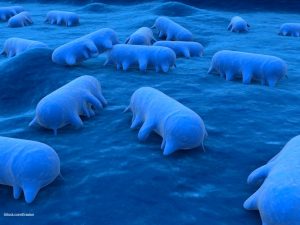A new study conducted at the University of Pennsylvania, and published in the Journal of Experimental Medicine may have discovered how Salmonella bacteria dodge the immune system. This lets them multiply and build up a presence that causes a systemic, or blood, infection.
 Normally, the immune system recognizes pathogens and releases molecules to kill them. Inflammasomes are a protein complex in animals that finds pathogens and tells the immune system to fight the invaders. The scientists discovered that Salmonella avoids inflammasome activation by “down-regulating flagellin expression”. The study’s lead author, assistant professor of pathobiology at the School of Veterinary Medicine Dr. Igor Brodsky, said, “we hypothesized that during the systemic phase of disease, Salmonella would have some way of avoiding inflammasome activation.”
Normally, the immune system recognizes pathogens and releases molecules to kill them. Inflammasomes are a protein complex in animals that finds pathogens and tells the immune system to fight the invaders. The scientists discovered that Salmonella avoids inflammasome activation by “down-regulating flagellin expression”. The study’s lead author, assistant professor of pathobiology at the School of Veterinary Medicine Dr. Igor Brodsky, said, “we hypothesized that during the systemic phase of disease, Salmonella would have some way of avoiding inflammasome activation.”
The researchers looked at mutated Salmonella strains. They discovered that when the gene that encodes the enzyme called aconitase was mutated, the inflammasome called NLRP3 was highly activated. The scientists wondered whether the normal version of aconitase might inhibit the inflammasome and let the bacteria go through the body without being stopped.
Aconitase is part of the Krebs cycle, the mechanism used by aerobic (oxygen-breathing) organisms to convert sugar into energy. Mutating two other components of that cycle also led to higher activation of the NLRP3 inflammasome, allowing rodents to clear the Salmonella introduced into their bodies. Some citrate component may activate the inflammasome.
Brodsky continued, “our work fits into this emerging idea that bacterial metabolites might be recognized by various components of the immune system for the purpose of either negatively or positively regulating immune responses.”
The team is working on a vaccination for chickens that may use an aconitase mutant that could protect the animal against systemic Salmonella infection. Brodsky said, “we get Salmonella from chickens that are chronically infected. So if you could prevent or limit chronic infection of chickens, that would be a nice way to limit Salmonella in the food supply.”




